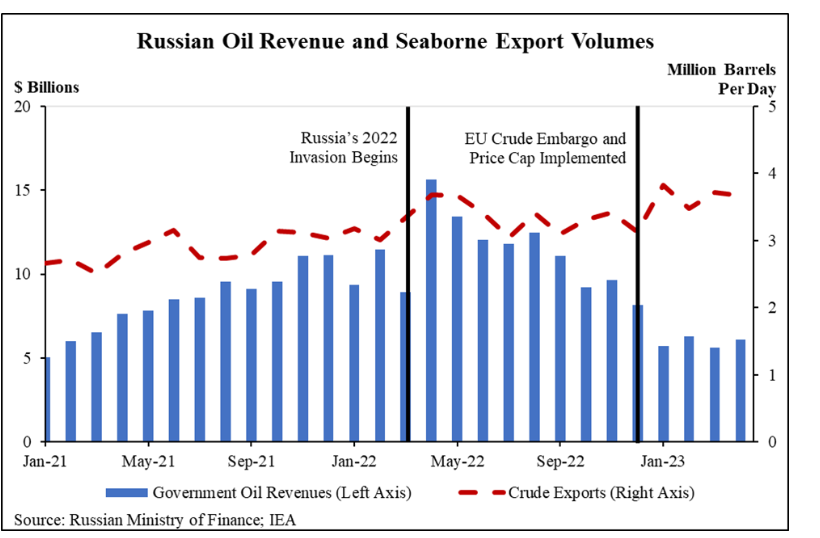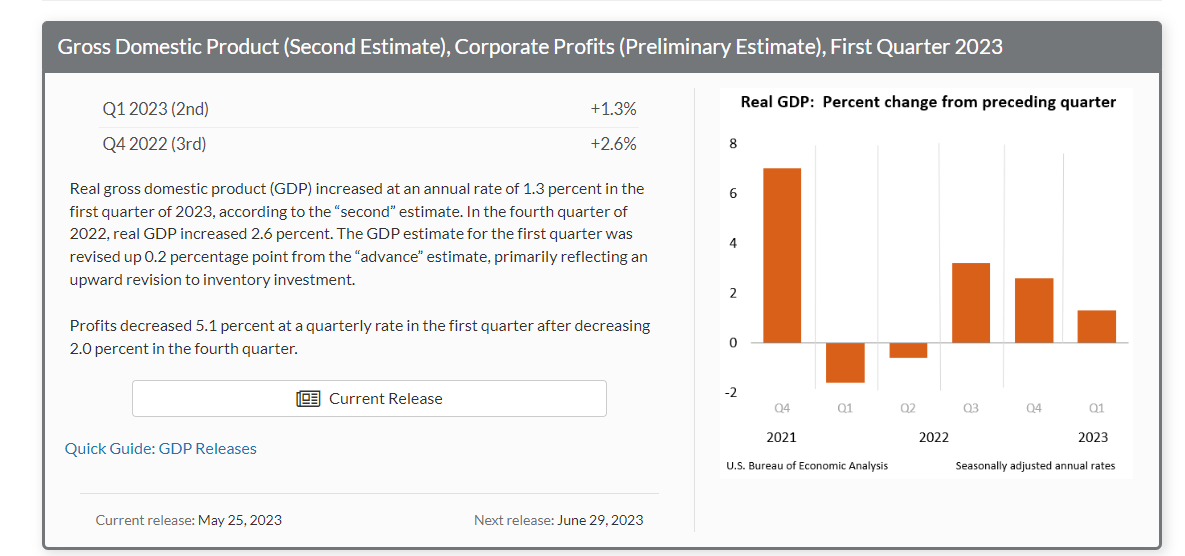Gasoline Futures Plunge, Saudi-Russo Discord Dampens Rally

So much for the Memorial Day rally? Gasoline futures are dropping nearly 7 cents/gallon in the early going this morning, leading the energy complex lower, and wiping out the strong gains we saw Wednesday. Diesel prices are down 4 cents so far and are now just a penny away from wiping out their gains for the week. Prices did recover some of their early losses following the Q1 GDP estimate that came in slightly above earlier guesses, and showed the US economy continues to see modest growth despite all of the recession warnings.
A day after the Saudi Oil minister threatened speculators shorting oil prices, a Russian official downplayed the chances of OPEC & friends agreeing to another output cut at its meeting next week, which seems to have sent some of the bullish bandwagon jumpers back to the sidelines.
The DOE reported a surge in the estimated demand for gasoline and diesel last week, which pushed inventories to new lows for the year, with gasoline stocks now at their lowest seasonal level in more than 6 years. While the weekly demand estimates are notoriously volatile (aka unreliable) the diesel reading touched its 2nd highest level of the year and offered hope for producers who have been languishing under some of the worst seasonal consumption that we’ve seen in decades.
What a difference a year makes: This time last year distillate cracks were spiking north of $70/barrel, some $25/barrel more than gasoline, incenting refiners to maximize diesel output. This year, gasoline cracks are rallying to a 10-month high and are trading $8/barrel over diesel values. The forward curve still favors diesel output long term and shows profitable run-rates for refiners for the next 2 years, albeit at much more modest levels than the records we’ve seen set over the prior 12 months.
Oil inventories saw a huge decline of more than 12 million barrels last week, despite another SPR release of 1.5 million barrels. The EIA’s adjustment factor was at play again, with a reduction in the fudge factor accounting for 8 million barrels of the drop, while a big decrease in imports accounted for another 7-million-barrel decline last week, while exports held strong north of 4-million barrels/day.
Refinery runs ticked slightly higher for a 2nd week, and continue to hold near year-ago levels, and should continue to ramp up as a busy spring maintenance season comes to an end. The main impediment to seeing refiners reach maximum run rates in June appears to be the rash of fires that have been breaking out lately. It’s not just US refiners that are struggling with fires, multiple refineries in Mexico have had multiple issues in the past week, further complicating the issues we saw back in February when 3 fires broke out on the same day.
Game change or pipe dream? Plans to build a 250mb/day oil refinery near the WTI delivery hub in Cushing OK were announced this week, with the facility claiming to operate on Hydrogen and Oxygen fuel sources that managers claim will reduce emissions by 95%. IF the project moves forward, construction is scheduled to start in 2024, with the first potential for supply starting in 2027.
The US Treasury published a progress report on the Russian Oil price cap last week, taking a page out of the DOE’s SPR playbook and patting itself on the back for a job well done. A Bloomberg article this morning details how India and China are the main beneficiaries of that plan.
Click here to download a PDF of today's TACenergy Market Talk.
News & Views
View All
The Recovery Rally In Energy Markets Continues For A 3rd Day
The recovery rally in energy markets continues for a 3rd day with refined product futures both up more than a dime off of the multi-month lows we saw Wednesday morning. The DJIA broke 40,000 for the first time ever Thursday, and while it pulled back yesterday, US equity futures are suggesting the market will open north of that mark this morning, adding to the sends of optimism in the market.
Despite the bounce in the back half of the week, the weekly charts for both RBOB and ULSD are still painting a bearish outlook with a lower high and lower low set this week unless the early rally this morning can pick up steam in the afternoon. It does seem like the cycle of liquidation from hedge funds has ended however, so it would appear to be less likely that we’ll see another test of technical support near term after this bounce.
Ukraine hit another Russian refinery with a drone strike overnight, sparking a fire at Rosneft’s 240mb/day Tuapse facility on the black sea. That plant was one of the first to be struck by Ukrainian drones back in January and had just completed repairs from that strike in April. The attack was just one part of the largest drone attack to date on Russian energy infrastructure overnight, with more than 100 drones targeting power plants, fuel terminals and two different ports on the Black Sea. I guess that means Ukraine continues to politely ignore the White House request to stop blowing up energy infrastructure in Russia.
Elsewhere in the world where lots of things are being blown up: Several reports of a drone attack in Israel’s largest refining complex (just under 200kbd) made the rounds Thursday, although it remains unclear how much of that is propaganda by the attackers and if any impact was made on production.
The LA market had 2 different refinery upsets Thursday. Marathon reported an upset at the Carson section of its Los Angeles refinery in the morning (the Carson facility was combined with the Wilmington refinery in 2019 and now reports as a single unit to the state, but separately to the AQMD) and Chevron noted a “planned” flaring event Thursday afternoon. Diesel basis values in the region jumped 6 cents during the day. Chicago diesel basis also staged a recovery rally after differentials dropped past a 30 cent discount to futures earlier in the week, pushing wholesale values briefly below $2.10/gallon.
So far there haven’t been any reports of refinery disruptions from the severe weather than swept across the Houston area Thursday. Valero did report a weather-related upset at its Mckee refinery in the TX panhandle, although it appears they avoided having to take any units offline due to that event.
The Panama Canal Authority announced it was increasing its daily ship transit level to 31 from 24 as water levels in the region have recovered following more than a year of restrictions. That’s still lower than the 39 ships/day rate at the peak in 2021, but far better than the low of 18 ships per day that choked transit last year.
Click here to download a PDF of today's TACenergy Market Talk.

Energy Prices Found A Temporary Floor After Hitting New Multi-Month Lows Wednesday
Energy prices found a temporary floor after hitting new multi-month lows Wednesday morning as a rally to record highs in US equity markets and a modestly bullish DOE report both seemed to encourage buyers to step back into the ring.
RBOB and ULSD futures both bounced more than 6 cents off of their morning lows, following a CPI report that eased inflation fears and boosted hopes for the stock market’s obsession of the FED cutting interest rates. Even though the correlation between energy prices and equities and currencies has been weak lately, the spillover effect on the bidding was clear from the timing of the moves Wednesday.
The DOE’s weekly report seemed to add to the optimism seen in equity markets as healthy increases in the government’s demand estimates kept product inventories from building despite increased refinery runs.
PADD 3 diesel stocks dropped after large increases in each of the past 3 weeks pushed inventories from the low end of their seasonal range to average levels. PADD 2 inventories remain well above average which helps explain the slump in mid-continent basis values over the past week. Diesel demand showed a nice recovery on the week and would actually be above the 5 year average if the 5% or so of US consumption that’s transitioned to RD was included in these figures.
Gasoline inventories are following typical seasonal patterns except on the West Coast where a surge in imports helped inventories recover for a 3rd straight week following April’s big basis rally.
Refiners for the most part are also following the seasonal script, ramping up output as we approach the peak driving demand season which unofficially kicks off in 10 days. PADD 2 refiners didn’t seem to be learning any lessons from last year’s basis collapse and rapidly increased run rates last week, which is another contributor to the weakness in midwestern cash markets. One difference this year for PADD 2 refiners is the new Transmountain pipeline system has eroded some of their buying advantage for Canadian crude grades, although those spreads so far haven’t shrunk as much as some had feared.
Meanwhile, wildfires are threatening Canada’s largest oil sands hub Ft. McMurray Alberta, and more than 6,000 people have been forced to evacuate the area. So far no production disruptions have been reported, but you may recall that fires in this region shut in more than 1 million barrels/day of production in 2016, which helped oil prices recover from their slump below $30/barrel.
California’s Air Resources Board announced it was indefinitely delaying its latest California Carbon Allowance (CCA) auction – in the middle of the auction - due to technical difficulties, with no word yet from the agency when bidders’ security payments will be returned, which is pretty much a nice microcosm for the entire Cap & Trade program those credits enable.





